Galyna Andrushko
LeeAnn Munk and Mary Beth Leigh Inducted into the Innovators Hall of Fame
he State Committee for Research is an advisory body formed to promote “research and development as an enterprise and as an engine for economic development in Alaska.” To further that goal, it established the Alaska Innovators Hall of Fame in 2014, honoring and celebrating both individuals and inventions in Alaska that “contribute to the state’s growing culture of ingenuity.”
The original 2014/2015 cohort included more than a dozen innovators, such as Cathy Cahill, who invented an air-sensing system that alerts pilots that they are encountering volcanic ash particles; Elden Johnson, one of the engineers that found solutions for how TAPS would carry hot oil over frozen ground; Mark Gronewald, who contributed to the development of fat tire bikes; and Tim Meyers, who used innovative farming methods to improve the agricultural output of Alaska’s tundra.
Just short of a decade later, two more exceptional Alaskans are being inducted into the Alaska Innovators Hall of Fame: LeeAnn Munk and Mary Beth Leigh.

Dr. Mary Beth Leigh
UAF
Dr. Mary Beth Leigh, a professor of biology at UAF, was nominated by Dr. Diane O’Brien, interim director of the Institute of Arctic Biology. In her nomination, O’Brien writes that she nominated Leigh for her work in building public engagement and understanding of the science of climate and the environment. She writes: “These efforts reached a new and greatly increased level of impact with the first Arctic Fest, a community celebration featuring the arts, sciences, and indigenous cultural and knowledge systems focused on the changing environment. This festival built on over a decade of innovation led by Dr. Leigh and her partners through the In a Time of Change (IToC) program, which brought together scientists and artists as part of the Bonanza Creek Long Term Ecological Research… These efforts have resulted in multiple shows, performances, and other artistic expressions of the science of the environment and climate change, which in turn have increased public engagement with and understanding of that science. This is a highly innovative approach to diversifying the perspectives of science and improving the accessibility of science for all.”
According to O’Brien, Leigh started innovating art/science integration early in her position at UAF, utilizing her background in dance and her involvement in a local band. At Arctic Fest, which took place in September 2022, forty-five artists created works of music, dance, photography, sculpture, storytelling, puppetry, textile arts, painting, printmaking, collage, book making, science illustration, poetry, and essays that illuminated aspects of boreal forest science, including nutrient cycling, insect outbreaks and damage, fire ecology, plant dispersal, and plant phenology.
Leigh says she has a “brilliant collaborator in this work, Dr. Lissy Goralnik.” Goralnik is a social scientist at Michigan State University who studies the impacts of arts/humanities/science collaboration on participants and audiences. Her work “helps us understand how building relationships between people and place can inspire care for communities and landscapes,” Leigh explains. She says Goralnik’s insights have helped the IToC program evolve over a decade and help steer it in exciting new directions.
While Arctic Fest was a culmination of years of work, it wasn’t a conclusion. Leigh’s vision is for Arctic Fest to become an annual event, attracting visitors from around the world and engaging stakeholders in the Interior “in a shared conversation about our changing environment,” O’Brien writes. “Her work is bringing tangible benefits to the quality of life for Alaskans, in a way that is poised to spark economic development and impact the conversation about the changing Arctic environment.”
She continues, “Dr. Leigh’s insight into what brings people together across the spectrum of human expression, her unique vision, her commitment to the work, and her skill in building communities is truly innovative.”
When asked how she views herself as an innovator, Leigh says: “I suppose my work is viewed as innovative because it’s reaching across the disciplinary silos that structure our prevailing academic systems. This is by no means a new idea, it’s an ancient one, harkening back to the days before the arts and sciences became so separated in Western culture—and to Indigenous culture and knowledge systems that have remained more holistic. I’m just a small part of a larger groundswell of interest in the value of multiple ways of knowing.”
In a Time of Change program artists on a field trip in 2021 at Bonanza Creek Experimental Forest, near Fairbanks.
Leif Van Cise
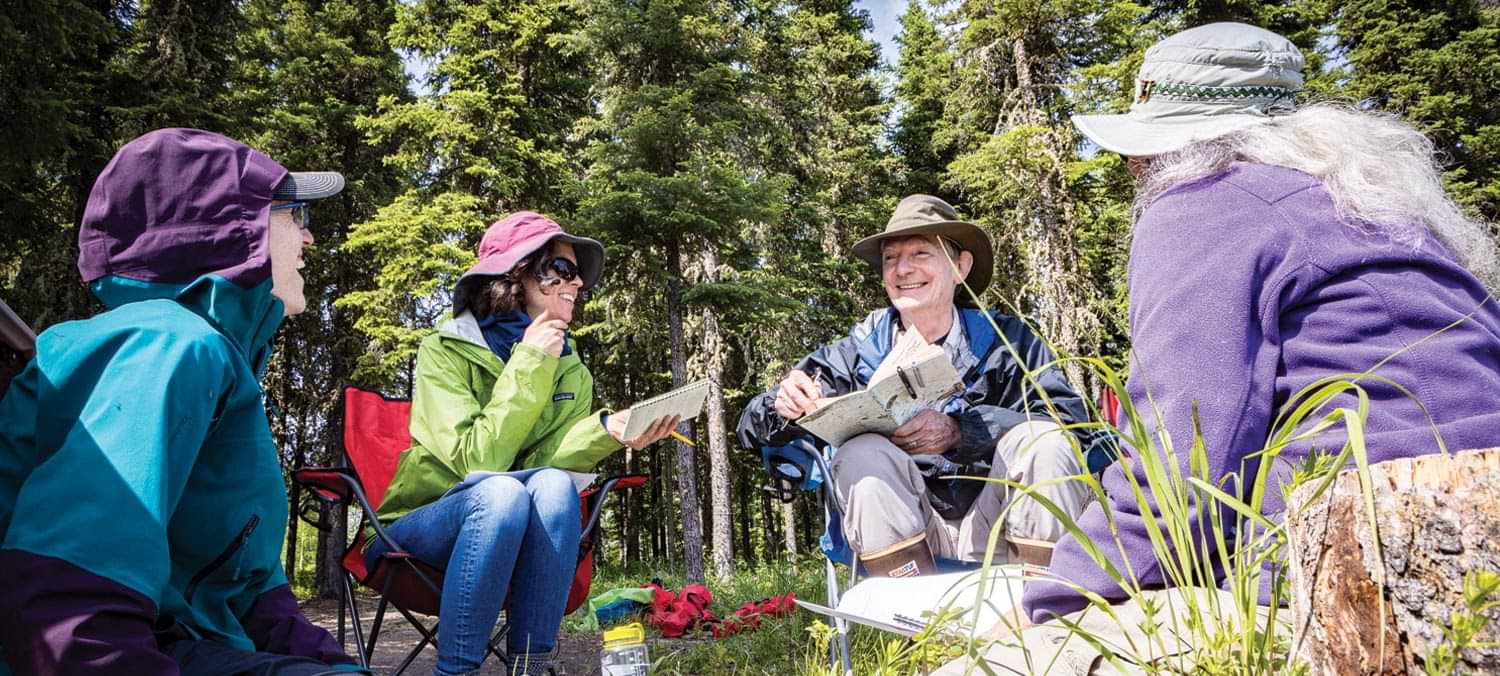
Leif Van Cise
The opening reception of the Boreal Forest Stories exhibit at the Fairbanks Arts Association Bear Gallery.
Todd Paris
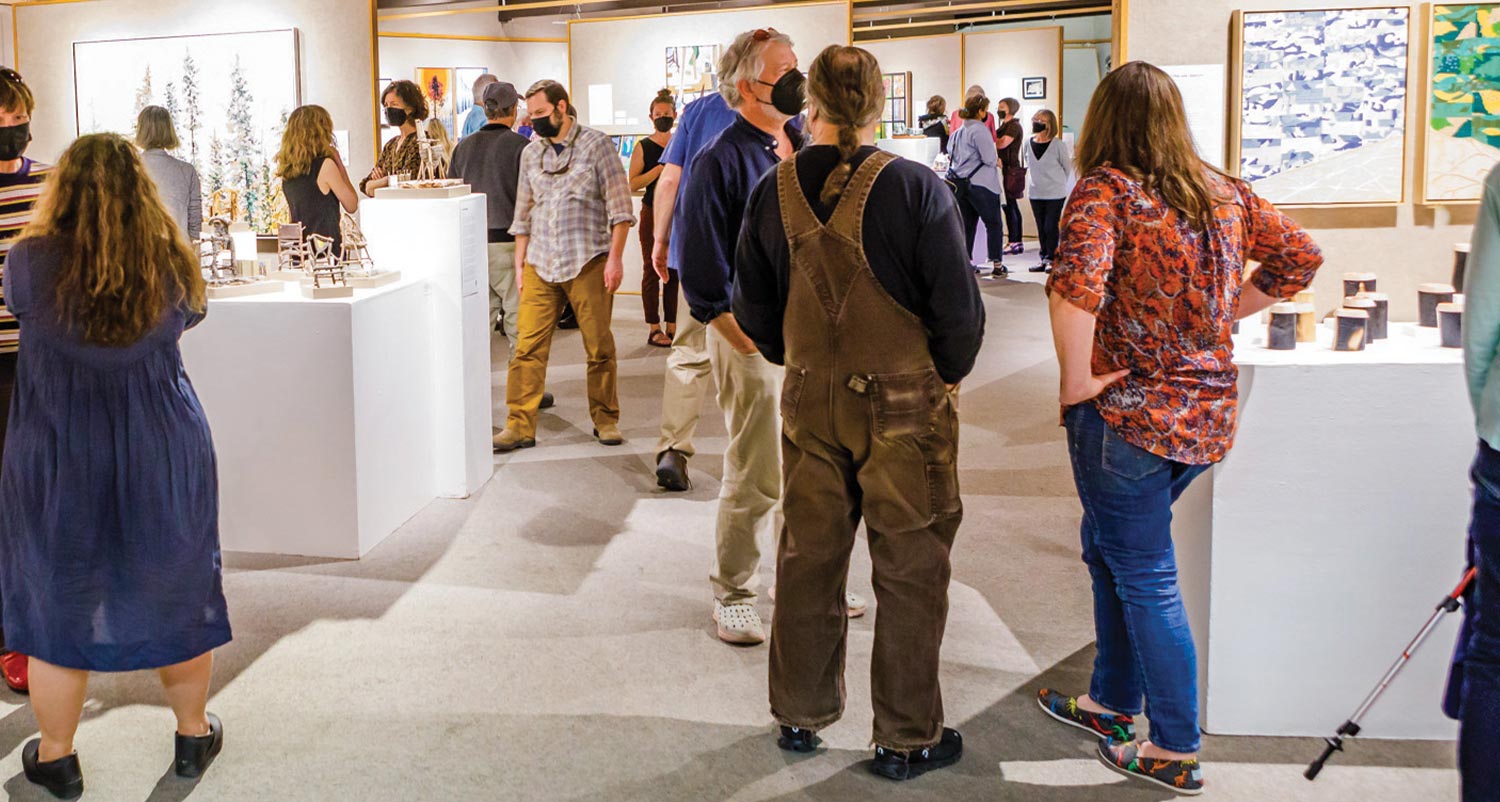
Todd Paris
She sees innovation as “making a breakthrough” and “bringing a fresh perspective to a challenge,” which she says is important in the 49th State. “In Alaska, our relative isolation and extreme environment has always required creative and collaborative problem solving. The fact that our environment is shifting so rapidly now means we need to support an even stronger culture of innovation.”
And how might that happen? Her advice is to reach out to the University of Alaska. Leigh says, “We’d love to partner with you to find innovative solutions to your challenges, and to give our students real world problem-solving experience that’ll prepare them to be the employees you’re looking for in the future.”
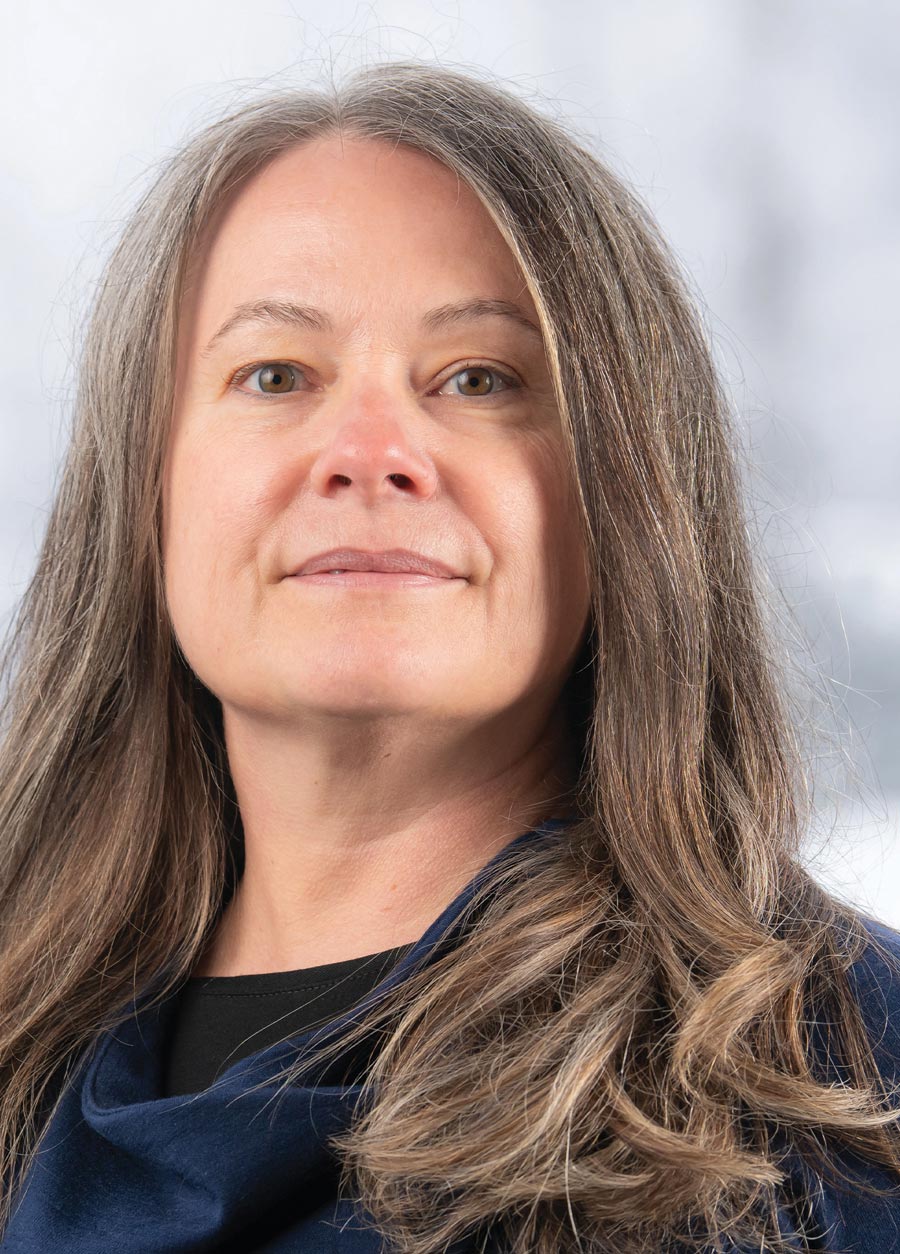
UAA
Asked about the innovation she sees in her own work, Munk says it’s the “interdisciplinary science approach where we are able to integrate chemistry, hydrogeology, geology, and even looking at climate change through time that has impacts on the environments we work in.” She continues, “It’s really the innovation of tying together and bringing together a lot of pieces of information, being able to synthesize data to help answer a particular question.”
As Kattenhorn explains in his recommendation, Munk is one of the world’s leading experts in lithium deposits “and has worked in collaboration with numerous academic organizations and alternate energy companies in this regard to develop models for their formation and to develop global expertise in the geochemistry of lithium brines.”
Professor of Geochemistry
Department of Geological Sciences, UAA
Above, Dr. LeeAnn Munk samples a stream near Kachemak Bay, and below she samples a stream in Argentina, both for geochemical analysis.
Wyatt Mayo
LeeAnn Munk
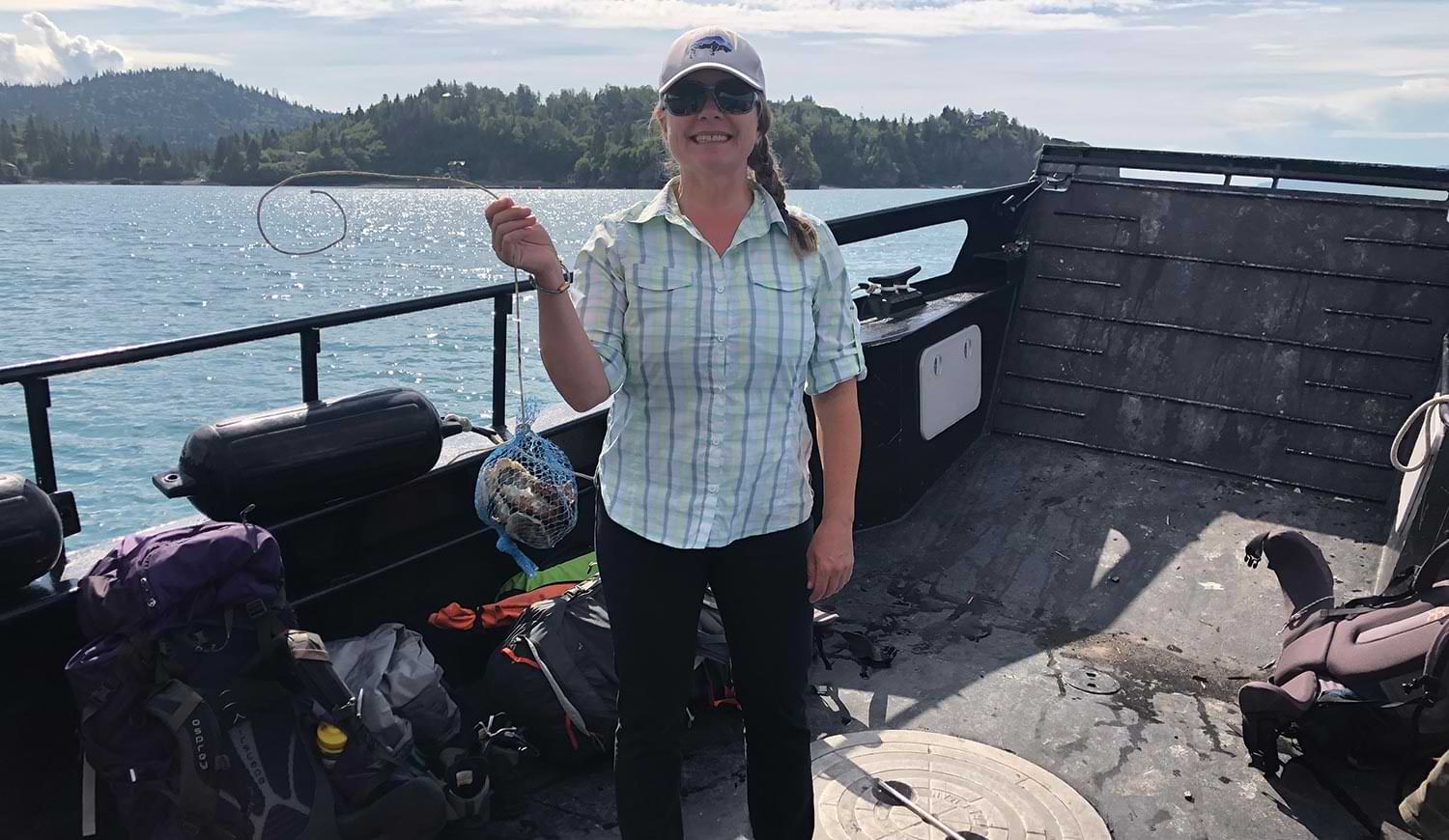
LeeAnn Munk
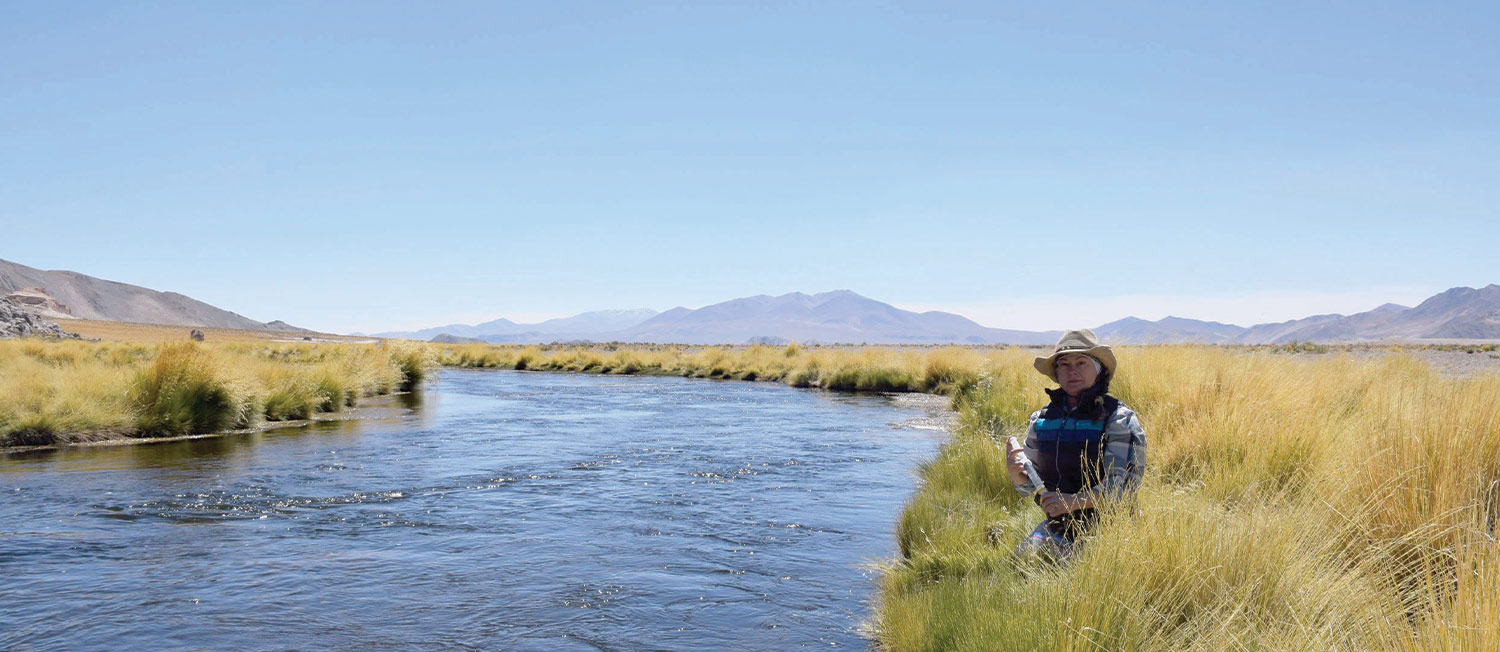
Munk says she was inspired to work in this particular field by retired geologist Dwight Bradley, whom she describes as a mentor and one of her best friends. “He came to me about 13 years ago and said, ‘Hey, what do you know about lithium?’ I was in my office and got out my periodic table and looked around and thought, ok, lithium. Must be a lot like sodium. I didn’t really know anything—I hadn’t been working on it. But I was really intrigued. He was working on other lithium deposits, and lithium brines were an area outside his expertise but were in line with my work, so we just started working on it.”
As an example, Munk was awarded a patent for her “innovative research on the utility of using the copper isotopic signature of very dilute waters to discover concealed copper deposits,” Kattenhorn writes. Essentially, Munk and her team analyzed surface waters with dilute copper concentrations, on the parts per billion scale. Her team was able to identify copper signatures in the water that were indicative of weathering from ore grade copper materials, and her method allows mining companies to identify concealed ore deposits.

According to Kattenhorn, her team already is. “The implications of her published work with a diverse team of colleagues are numbers,” he writes. “For example, ‘Lithium Brines: A Global Perspective’ was the first and only ore deposit model developed for lithium brines which host most of the world’s lithium resources.” He also uses the example of a report led by one of Munk’s graduate students, ‘Lithium Storage and Release from Lacustrine Sediments: Implications for Lithium Enrichment and Sustainability in Continental Brines,’ which “defined a new type of lithium deposit and discovered a massive amount of lithium in Clayton Valley in western Nevada.”
For Munk, her ability to contribute so significantly to research that is vital for renewable energy development is “a little bit serendipitous.” She says, “Pursuing my research interests, I have had various opportunities to get involved with some of these important projects that are a little more applied research and help in the exploration and discovery of lithium and copper, which are both critical minerals for the energy transition. I see it as, I get to combine what I love with applications to things that are important, not only to Alaska but the rest of the world.” ![]()